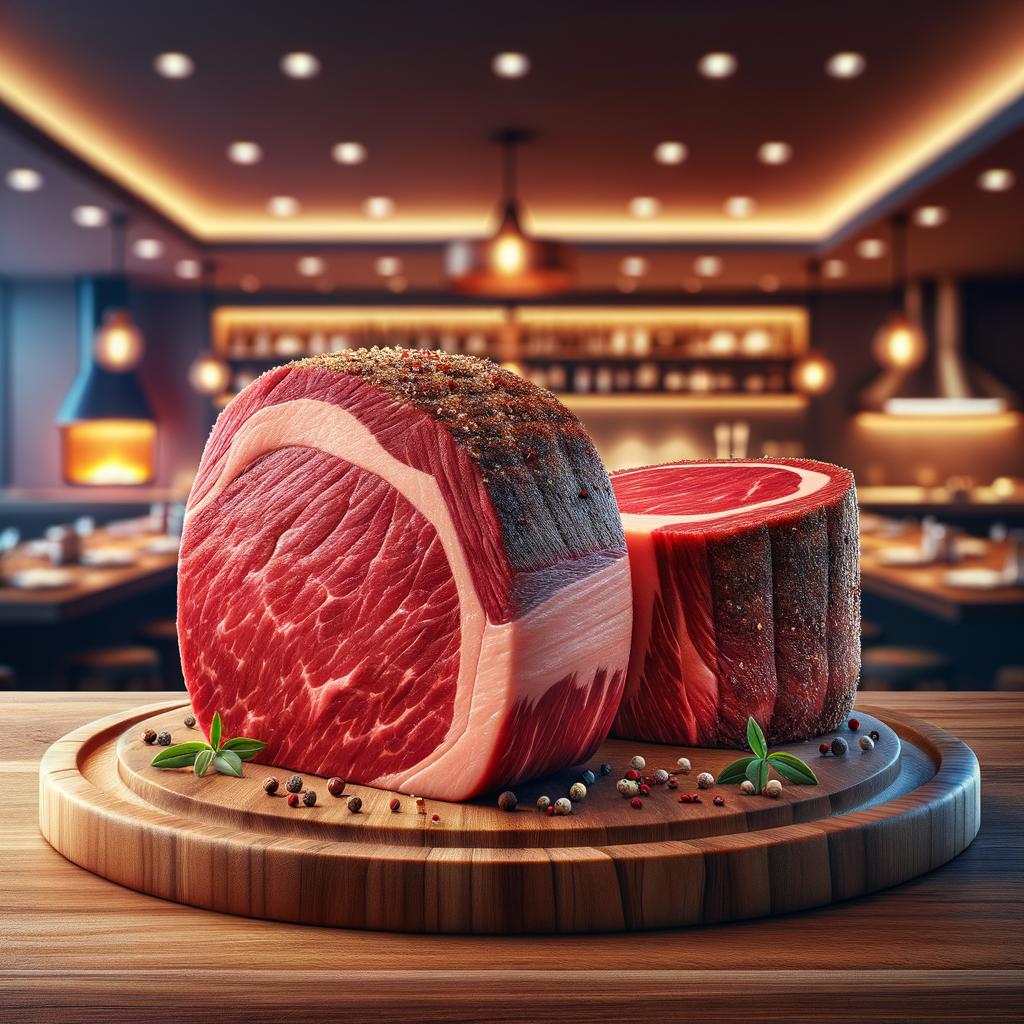Picanha Beef Cut

Description
Picanha, a prized cut of beef, is the culinary jewel of Brazil. It is also known as the top sirloin cap, rump cover, rump cap or coulotte in other parts of the world. This cut is characterized by its distinctive, crescent shape and a thick layer of fat that blankets one side. The meat itself is a deep, rich red, marbled with streaks of fat that melt during cooking, infusing the meat with unparalleled juiciness and flavor. Picanha's flavor profile is robust and beefy, with a slightly sweet, buttery undertone that comes from the fat cap. Its texture is tender and succulent, yet it retains a satisfying chewiness. What sets Picanha apart from other beef cuts is its fat cap, which, when cooked properly, provides a crisp, flavorful crust that contrasts beautifully with the tender meat beneath.
Primary Uses
Picanha is the star of any Brazilian churrasco, or barbecue, where it is skewered and cooked over open flames. The fat cap is scored in a cross-hatch pattern before cooking, which allows it to render and baste the meat as it grills. This cut is traditionally served medium-rare, sliced thin to showcase its tenderness. Outside of Brazil, picanha is often used in roasts or steaks, and can even be ground for use in burgers. In addition to its culinary uses, picanha has cultural significance in Brazil, where churrasco is not just a meal, but a social event.
History
The history of Picanha is deeply intertwined with the history of Brazilian cattle ranching. The term 'Picanha' derives from the word 'picana', which was a pole used by ranchers to herd cattle, and it was used to poke the part of the cow where this cut comes from. It gained popularity in the mid-20th century as Brazil's cattle industry boomed, and has since become a symbol of Brazilian cuisine. The tradition of churrasco, with Picanha as its centerpiece, is a testament to the country's love of communal, leisurely meals.
Nutritional Information
Picanha is a good source of protein, zinc, and B-vitamins, particularly vitamin B12, which is essential for brain function and the formation of red blood cells. The fat in picanha is primarily monounsaturated, the same heart-healthy fat found in olive oil. However, due to its high fat content, it should be consumed in moderation. Compared to leaner cuts of beef, picanha has a higher calorie count and fat content, but its rich flavor and tenderness make it a worthwhile indulgence. As with all foods, balance and moderation are key.

